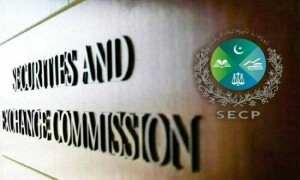Trailing at a little over Rs1200, by the first week of January, cement price on average this fiscal year (for the period Jul’23-Jan’24) is up 15 percent compared to last year; and up a whopping 70 percent from only two years ago. Perhaps, two years is too long ago and such a comparison would seem ludicrous but the price trend over the past three years since covid ended is remarkably and single-mindedly one directional marked by sharp bursts in price hikes every few weeks. This feeds into the ballooning cost of construction which caused quite the slump this year.
Prices have in fact, gone up undeterred by the demand dynamics that have displayed little to no signs of growth. Domestic offtake in the first half of the fiscal year is up 1 percent. Exports came to the rescue for a bit, taking the total offtake growth up 10 percent during this period, and contributing about 15 percent to the sales mix (in 1HFY24) compared to 8 percent in 1HFY23. This is no small feat as gaining access to new markets for exports has proven to be a laborious task for some—take DGKC for example that spent an entire year meeting standards and attaining certifications to export to the US market. But after sending three shipments whole, the company is readying itself to reach out to other North American and European markets with confidence. But even when such an exercise is underway for some companies, and rupee-dollar parity is at a favourable level for export competitiveness, domestic markets is where pricing power exists.

And it suits cement manufacturers to not enter into price wars with each other to sell more volumes locally. Perhaps, there isn’t enough demand to be had even if a price war ensued that brought prices down. The industry has been in expansion mode which will continue to tighten the noose as demand tumbles and falls with capacity utilization slipping below 60 percent. At the prevailing levels of 57-58 percent monthly capacity utilization, the industry has no choice but to stay put on prices.
Other timely and prudent decisions will also come in handy—such as investment in captive energy to minimize dependence on grid electricity (in most cases, solar plants and waste heat recovery units), diversifying sources of coal to optimize on costs and utilizing subsidized financing facilities (TERF) to keep finance costs curtailed. Without offtake recovery, companies will be leaning heavily on prices as long as that works for them.

























Comments
Comments are closed.